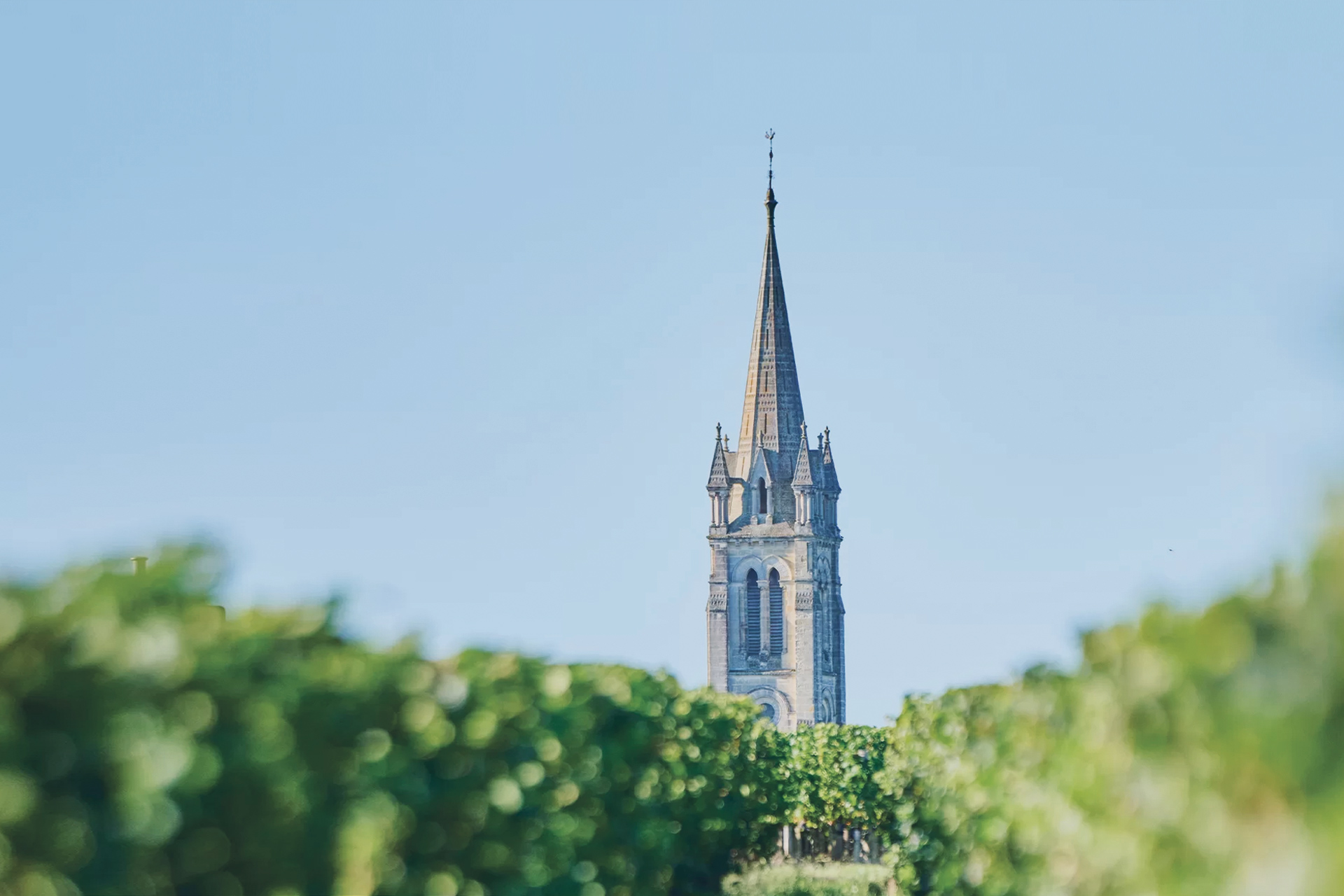Your cookie preferences
We use cookies to personalize content and improve your experience. You can accept all cookies or manage your preferences


In the Bordeaux region, on the right bank of the Garonne and Dordogne rivers, not far from Périgord, a number of renowned appellations (Pomerol, Fronsac, Canon-Fronsac, Lalande-de-Pomerol, Saint-Emilion (and the local appellations that add Saint-Emilion to their village names)) make up the Libourne vineyards, named after the bastide town of Libourne at the confluence of the Dordogne and Isle rivers.


In contrast to the large estates of the Médoc, the Libournais is home to an almost Burgundian image of small, family-run vineyards. Pomerol is one of the smallest (813 hectares) and most fragmented (138 winegrowers) protected designations of origin in this geographical area.
It occupies a unique terroir, a hill of blue clay veined with red iron oxide dating from the Tertiary era, covered with ruby gravel from the Quaternary period, quartzite and flint, among which viticultural work sometimes uncovers Palaeolithic or Neolithic tools, carved or polished, the first traces of human occupation of this hill.


The Pomerol appellation forms a triangle bordered to the north-east by the Barbanne stream, to the south-east by the commune and the Saint-Emilion appellation in the gravelly region of Châteaux Cheval-Blanc and Figeac, and to the west by the town of Libourne.


The Barbanne, a tributary of the left bank of the River Isle and an ancient linguistic frontier between Gascon in Pomerol and Saintonge patois to the north, gave its name in medieval times to the whole of the current appellation area. A cartulary in the archives of the Grand Priory of Toulouse, belonging to the Order of the Hospitallers of St John of Jerusalem, refers to the area as ‘Terres de Barbanne’.
The south-eastern border, bordering the jurisdiction of Saint-Emilion, was probably an ancient road leading to the port of Condat at the confluence of the Isle and Dordogne rivers. The Gallo-Roman vine-growing and mixed farming villas in the region thus had access to the river via the Pomerol plateau.
The presence of Lucaniac, the villa of the famous poet and consul Ausone, in the commune of Montagne, a few kilometres to the east of Pomerol, is a credible hypothesis. Diana and Venus, statuettes dating from the late 4th and early 5th centuries, kept in the Musée d’Aquitaine and the Musée du Louvre, were discovered here in 1843.
To the west lies the bastide town of Libourne, of which Pomerol is the historic vineyard. It was founded in 1270 by Sir Roger de Leyburn, Lieutenant to Henry III, King of England, on the site of the ancient Gallo-Roman port of Condatis (Condat).
This marked the beginning of a history of more than six centuries between Pomerol and the Hospitaller Order. A few cruciform markers marking the borders of the Commanderie and the Croix de Gay, a 12th-century crossroads on the pilgrimage route to Santiago de Compostela, bear witness to this former Hospitaller possession, which was brought to an end by the French Revolution in 1792.

In modern times, recognition of the exceptional quality of Pomerol wines only began in the mid-19th century. The current pre-eminence of the Merlot grape variety in the appellation (80% of the vineyard) makes it attractive to combine the destinies of this grape variety and this terroir.
A son of Cabernet Franc, Merlot was for a long time motherless, until the discovery in 1992 in Brittany, in the Rance valley in the commune of Saint-Suliac near the place known as Anse du Vigneux, of an unknown variety of cultivated vine, later christened Magdeleine Noire des Charentes.
Ripe on Saint Mary Magdalene’s Day (22nd of July), this grape variety probably, among other qualities, gave Merlot an earlier ripening than Cabernet Franc and perhaps also particular flavours that make it the favourite of a bird whose plumage colour is close to that of a ripe Merlot berry, the blackbird.
It was not until the second half of the 19th century that Merlot became the predominant grape variety in Pomerol, displacing other varieties. One hypothesis is the change in the agronomic behaviour of grape varieties brought about by the need to graft them onto American rootstocks following the phylloxera crisis that began in France in 1853.
It is possible that Merlot, more than any other Bordeaux grape variety, benefited from this grafting, which regularised its production by reducing its susceptibility to coulure (the loss of part of the harvest at the time of fruit set (berry formation) due to poor fertilisation of the vine flowers).
The export of wines from the right banks of the Garonne and Dordogne rivers in the Libourne region, of which Pomerol is a part, was facilitated by the construction of ‘stone bridges’ (over the Garonne at Bordeaux between 1810 and 1822 and over the Dordogne at Libourne between 1820 and 1824), and then by the arrival of the Bordeaux-Libourne railway line in 1851, which gradually replaced the shipping of wines by river on traditional barges.
The right bank of the Gironde rivers became more accessible.
This made it possible to showcase the exceptional quality of the often confidential wines produced in Pomerol and Saint-Emilion. Wine brokers and merchants from the ‘Place de Bordeaux’, the traditional contacts for the Crus Classés of the Médoc, began to take an interest in the great wines of the Libourne region.
Other wine merchants, many of them from the Corrèze department, set up in Libourne and contributed to the reputation of the vineyards in the area and beyond.

We use cookies to personalize content and improve your experience. You can accept all cookies or manage your preferences